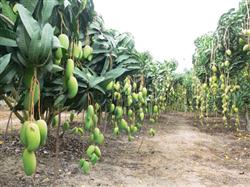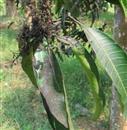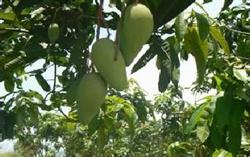Mango blossoms are early and fertile.

Due to dry winter weather and high temperatures and other reasons, often make mango flower buds early, early flowering ears, the formation of early flowers. Early flowering mango trees have long panicle, large flower quantity, more nutrient consumption, early flowering, easy to be affected by low temperature and rainy weather, resulting in poor pollination and fertilization of flowers, and finally low fruit setting rate. If early and heavy fertilizer is applied, the nutrition level of early flowering mango tree can be improved, the tree vigor can be strengthened, and the ability of flower ear to resist low temperature and rainy weather can be enhanced, the early flowering mango tree can be pollinated and fertilized normally, and the fruit setting rate can be increased. Specific fertilization methods are as follows: In winter and spring, we should pay attention to observe the autumn shoots of mango trees. When we find that the top of autumn shoots sprouts flower buds before the beginning of spring, we should immediately apply strong flower fertilizer, mainly high-quality organic fertilizer and complete nitrogen, phosphorus and potassium fertilizer, and at the same time properly supplement phosphorus and potassium fertilizer. For fruit trees over 5 years old, 45~50 kg of decomposed human and livestock manure should be applied to each tree.(15-15-15) Compound fertilizer 1.5~ 2kg, calcium superphosphate or calcium magnesium phosphate 3~ 4kg, potassium chloride or potassium sulfate 1~ 1.5kg. The specific fertilization method comprises the following steps: digging 6 - 8 radiating furrows with the depth of 15 - 20cm, the width of 25 - 30cm and the length of 80 - 100cm on the topsoil under the tree crown, fully stirring and uniformly mixing all fertilizers, spreading the fertilizers in the radiating furrows, and covering the furrows with soil. In addition, 0.1% borax, 0.1% magnesium sulfate, 0.2% urea, 0.2% potassium dihydrogen phosphate and 800 times nucleotide active liquid fertilizer mixture should be sprayed on leaves every 10~15 days for 3~5 times continuously to evenly wet all branches, leaves and flower buds inside and outside the tree crown. It is appropriate to drip water drops at the beginning to supplement nutrients from leaves to improve the nutritional level of plants, which is conducive to promoting strong flower ears.
- Prev

How to apply fertilizer to autumn mango
Fungal diseases. At present, six kinds of pathogens causing mango soot disease have been found in China. In order to harm leaves, shoots and fruits, affect leaf photosynthesis and fruit appearance. Prevention and control methods: first, reasonable close planting and pruning to keep the crown ventilated and transparent. Second, focus on the control of aphids, shell insects, flat-beaked leafhoppers.
- Next

Chemical control of mango stem rot
1 site condition Meizhou is located in the mountainous area of eastern Guangdong, with annual rainfall of 1800mm, annual average temperature of 21 ℃, annual sunshine hours of 2031 hours, and extreme minimum temperature of-2.6 ℃. The planting land is sloping land, sandy soil, thin soil, pH value 4.5, organic matter 1.65%, total nitrogen 0.083mg/kg, hydrolyzed nitrogen 112mg/kg, phosphorus pentoxide 0.
Related
- Moge, come on! The staff of the peasant association in the producing area of cantaloupe were frightened when the crowd gathered.
- Causes and Solutions of low Fruit setting rate of Apple
- Symptoms and control measures of passion fruit virus disease
- Fruit growing lesson: how do apple orchards keep high yields?
- Can you build orchards in the mountains? What are the pros and cons?
- How to manage the coloring period of Crisson grape?
- This paper introduces the processing technology of two kinds of fig products.
- How much is a month for retired teachers in rural areas by 2020?
- How can strawberry planting increase sugar content? We should pay attention to management in many aspects.
- What are the cultivation techniques on how to improve the yield of golden fruit?

